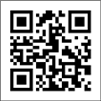資料紹介
Classification of Culture
"Shame Culture" is the famous word as which Mrs. Ruth Benedict, an American author, described Japanese culture in her book "The Chrysanthemum and the Sword-Patterns of Japanese Culture," contrasting Western "Sin Culture." From my point of view, however, the emphasis we place on individual decision making or on how others perceive us create a barriers between cultures; "others-centered culture," which defines the culture concerning about others, and "individual-centered culture," which refers to the culture emphasizing individual first. Therefore, the cultural barriers, which are depended on who you regard as the subject, are sources that we learn the most about other cultures.
First of all, Western culture, or "Sin Culture" is individual-centered culture. The moral depends on whether their actions are against the law or not. They recognize, therefore, that it is wrong to break the principle of the society and when they break those principles of the society, they feel guilt. It is greatly influenced by the religion, especially Christianity. They believe that humans are individually responsible to what they do by God. Thus, they make the importance of the relationship between God and humans. Because their standard of judgment is determined by God, they act independently.
On the other hand, Japanese culture, or "Shame Culture" is others-centered culture. The moral depends on how others feel about them. For example, when they do something, they are worr
タグ
代表キーワード
 All rights reserved.
All rights reserved.
資料の原本内容 ( この資料を購入すると、テキストデータがみえます。 )
Classification of Culture
"Shame Culture" is the famous word as which Mrs. Ruth Benedict, an American author, described Japanese culture in her book "The Chrysanthemum and the Sword-Patterns of Japanese Culture," contrasting Western "Sin Culture." From my point of view, however, the emphasis we place on individual decision making or on how others perceive us create a barriers between cultures; "others-centered culture," which defines the culture concerning about others, and "individual-centered ...








